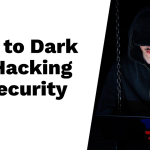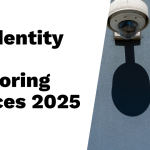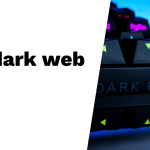If you find out your data is on the dark web, the first step is to change any exposed passwords. Make them unique and strong. Enabling two-factor authentication (2FA) adds extra security too. After that, keep an eye on your financial accounts for any unauthorized transactions. If credit or debit card info was compromised, cancel those cards immediately and alert your bank. For personal identification information breaches, file a report with the FTC and consider setting up fraud alerts or a credit freeze. Regularly monitor your credit reports and consider using dark web monitoring services to keep tabs on your information over time.
Table of Contents
- Immediate Actions After Data Breach Notification
- Assess the Type of Exposed Information
- Credit Monitoring and Protection Steps
- Regular Monitoring of Your Data
- Additional Security Measures to Implement
- Long-Term Prevention Strategies
- Legal and Reporting Actions to Take
- Engage Professional Help if Necessary
- Frequently Asked Questions
1. Immediate Actions After Data Breach Notification

When you receive a notification that your data has been compromised, it’s crucial to act quickly. Start by changing any passwords that were exposed. Use strong, unique passwords that you haven’t used before; this can help safeguard your accounts from immediate threats. Next, enable Two-Factor Authentication (2FA) on all your accounts. This adds an extra layer of security that can deter unauthorized access even if someone has your password.
Keep a close eye on your financial accounts. Regularly review your bank and credit card statements for any unauthorized transactions. If you spot anything suspicious, report it to your bank or credit card company right away. It’s also a good idea to notify relevant institutions about the breach, as they may offer additional security measures or advice specific to your situation.
Take a moment to review your account settings. Look for any unauthorized changes, and ensure your recovery options are updated. This helps prevent someone from taking control of your accounts. Additionally, secure your devices by running security scans. This can help you detect any malware or spyware that may have been installed during the breach.
Be cautious about sharing personal information, particularly on social media. Limit what you disclose to protect yourself from further exposure. Staying informed about future breach notifications is also wise; subscribing to alerts from monitoring services can keep you updated. If you’re feeling insecure about your accounts, consider placing temporary holds on them until you can ensure they are safe again.
Lastly, develop a personal action plan for future breaches. Having a strategy in place can help you respond more effectively if your data is compromised again.
- Change Your Passwords: Immediately change any exposed passwords to unique and strong ones, avoid reusing old passwords.
- Enable Two-Factor Authentication (2FA): Implement 2FA on all your accounts to provide an extra layer of security.
- Monitor Financial Accounts: Check your bank and credit card statements for unauthorized transactions, report any suspicious activity promptly.
- Notify Relevant Institutions: Inform your banks and service providers about the breach, as they may have additional security measures.
- Review Account Settings: Check your account settings for unauthorized changes, ensuring your recovery options are up to date.
- Secure Your Devices: Run security scans on your devices to detect any malware or spyware that may have been installed.
- Limit Sharing of Personal Information: Be cautious about sharing your personal information, especially on social media.
- Stay Informed on Breach Notifications: Subscribe to alerts from data breach monitoring services to stay updated on future incidents.
- Consider Temporary Account Holds: If necessary, place temporary holds on your accounts until you feel secure again.
- Develop a Response Plan: Create a personal action plan for handling potential breaches in the future.
2. Assess the Type of Exposed Information
If your credit or debit card information is compromised, you should cancel the affected card(s) and request replacements immediately. It is also crucial to notify your financial institutions to secure your accounts and monitor for any fraudulent activities. In the case of personal identification information, or PII, being exposed, filing a report with the Federal Trade Commission (FTC) at identitytheft.gov is necessary. If your Social Security number is compromised, consider placing a credit freeze or fraud alerts with the major credit bureaus. For compromised email addresses, stay vigilant for phishing attempts and suspicious emails that could lead to further breaches.
Additionally, evaluate any other sensitive data that might be exposed, such as health records or passwords. Understanding how the breached information may be used or sold on the dark web is also important. It may be wise to look into identity theft protection services that monitor the use of your data. Keep a record of what information was compromised for future reference, and be aware of the potential risks associated with that information to take appropriate actions.
| Type of Exposed Information | Actions to Take |
|---|---|
| Credit/Debit Card Information | Cancel the affected card(s) and request replacements. Notify your financial institutions to secure your accounts. |
| Personal Identification Information (PII) | File a report with the Federal Trade Commission (FTC) through identitytheft.gov. For compromised Social Security Numbers, consider credit freezes or fraud alerts. |
| Email Addresses | Be vigilant for phishing attempts and suspicious emails that could lead to further data breaches. |
| Other Sensitive Data | Assess if any other sensitive data, such as health records or passwords, is compromised. Document the type of information exposed. |
3. Credit Monitoring and Protection Steps
Place fraud alerts on your credit report by notifying the credit bureaus. This action makes it more challenging for identity thieves to open new accounts in your name. You might also want to consider a credit freeze, which prevents creditors from accessing your credit report altogether, making it nearly impossible for new accounts to be opened.
Signing up for credit monitoring services can provide peace of mind. These services offer alerts for any changes to your credit report, helping you stay informed about your financial standing. Regularly reviewing your credit reports is essential, too; look for any unusual activity or new accounts that you did not initiate.
If you discover any inaccuracies on your credit report, dispute them with the credit bureaus right away. Monitoring your credit utilization is also important; keep an eye on how much credit you are using compared to your available limits.
Educating yourself on your rights related to credit reporting and identity theft can empower you to take action when necessary. Be cautious about sharing your personal information, both online and offline. You might also want to consider identity theft insurance, as some policies can help cover losses resulting from identity theft.
Staying proactive is key. Regularly check your financial statements and credit reports, and remain vigilant for any signs of fraud.
4. Regular Monitoring of Your Data
Regular monitoring of your data is crucial for staying ahead of potential threats. One effective way to do this is by utilizing dark web monitoring services, which continuously scan for your personal information on the dark web. By signing up for these services, you can receive alerts if your data appears in sources that could be harmful.
It’s also important to check your credit reports regularly. This allows you to spot any unusual activity or new accounts that you did not open. Monitoring your credit report can be a proactive measure to catch identity theft early.
Setting up alerts on your financial accounts can provide an added layer of security. These alerts notify you of any suspicious transactions, helping you respond quickly if something looks off. Additionally, regularly reviewing your bank and credit card statements can help you identify unauthorized transactions.
Consider using identity theft protection services, which can monitor and alert you to potential identity theft. These services often provide tools that notify you of changes to your personal information, giving you peace of mind.
Staying informed about new scams and phishing techniques is also essential. Being aware of current threats can help you recognize suspicious emails or messages that may target your information.
Conducting regular personal audits of your data and accounts is another good practice. This involves assessing any vulnerabilities and ensuring your information is secure. Keeping backup copies of important documents and data is wise, as it protects against loss in case of identity theft.
Finally, engaging in community awareness by sharing information and experiences with friends and family can foster a more informed community. By working together, you can help each other stay vigilant against potential threats.
5. Additional Security Measures to Implement
Using a password manager can simplify your online security. It allows you to create, store, and manage unique and complex passwords for each of your accounts. This way, you won’t have to remember every password, which reduces the temptation to reuse them. Keeping your security software updated is crucial too. Ensure that your antivirus and anti-malware tools are current to defend against potential threats.
Educating yourself on phishing and scams is another essential step. Familiarize yourself with common tactics used by cybercriminals, so you can recognize suspicious emails and messages. Additionally, enabling account alerts for changes, like password updates or new logins, can help you catch unauthorized access early.
Regularly reviewing your privacy settings on social media and online accounts can limit your exposure. Adjusting these settings can help control who sees your information. Always utilize secure connections when accessing sensitive data online, and be cautious when using public Wi-Fi. If you must use it, a VPN can add an extra layer of security.
It’s also wise to limit the personal information you share online. Be mindful of what you post and who you share it with. Consider implementing multi-layer security, like firewalls and intrusion detection systems, to enhance your protection. Lastly, regularly reviewing and updating your security policies and practices ensures that you stay ahead of potential threats.
6. Long-Term Prevention Strategies
Implementing strong password policies is crucial. Use complex passwords and change them regularly, steering clear of common words or predictable sequences. Additionally, maintaining up-to-date software is essential. Regularly update your operating system and applications to patch vulnerabilities that could be exploited by cybercriminals. Conducting regular security audits helps in assessing your cybersecurity measures and identifying potential weaknesses that need addressing. If you have employees or users, training them on cybersecurity practices can significantly reduce the risk of data breaches. Make sure everyone understands the importance of security protocols and best practices.
Developing an incident response plan is another vital step. This plan should outline how to respond to data breaches, including communication strategies to inform affected parties. Utilizing encryption to protect sensitive data, both in transit and at rest, adds an extra layer of security. Limiting access to sensitive information ensures that only authorized personnel can view or handle critical data. Regularly backing up important data is also a good practice; it minimizes the potential loss in case of an incident and allows for quicker recovery.
Engaging in threat intelligence sharing with other organizations can enhance your understanding of the current threat landscape. This collaboration allows for sharing insights and updates on potential threats that could impact your data security. Finally, staying informed on cybersecurity trends by regularly reviewing industry news helps you adapt to new threats and adjust your strategies accordingly.
7. Legal and Reporting Actions to Take
If you suspect that your data has been compromised, it is crucial to take legal and reporting actions promptly. First, if you believe your identity has been stolen, report it to your local police department and obtain a copy of the report. This document may be vital for any future claims or disputes. Additionally, document all communications and actions taken in response to the breach. Keeping a detailed record can help protect your rights and aid in any investigations.
Notify any affected parties if your data breach might impact others, such as family members or employees. Inform them of the situation and suggest protective measures they can take. Consulting with a legal counsel is also wise if you’re unsure about your rights or obligations following a data breach. They can provide guidance tailored to your specific situation.
Understand your reporting obligations, as some jurisdictions require you to notify authorities about data breaches. If your information has been misused, consider filing a complaint with the Federal Trade Commission (FTC) through their website. This step could help initiate investigations and potentially prevent further misuse of your data.
Explore any potential legal recourse against those responsible for the breach. This may involve civil actions to recover damages you might have incurred. Be aware of state-specific laws related to data breaches and identity theft, as these can vary significantly.
Finally, engage with any relevant regulatory bodies related to your industry, as they may have specific guidelines and support resources to assist you in managing the situation.
8. Engage Professional Help if Necessary
If you find your data on the dark web, getting professional help can be crucial in navigating the aftermath. Consider identity theft protection services, which can offer monitoring and assistance in recovering from identity theft incidents. These services can alert you to suspicious activities and guide you through the recovery process.
Additionally, hiring cybersecurity experts can help assess your current security measures and improve your overall protection. They can identify vulnerabilities in your systems and provide recommendations tailored to your situation.
Legal guidance is also important. Consulting with attorneys who specialize in data protection and privacy laws can clarify your rights and provide necessary steps for legal recourse.
If the breach impacts your reputation, engaging public relations experts can help manage communication and mitigate damage to your public image. They can help craft messages to reassure your customers and stakeholders.
Financial advisors can assist you in understanding and managing any financial repercussions from identity theft. They can help you navigate potential losses and protect your assets.
Mental health is equally important. If the breach affects your emotional well-being, speaking with a counselor or therapist can provide support.
For technical issues, utilizing IT support can ensure that your systems are secure and properly configured to prevent future breaches. They can guide you on necessary updates and security practices.
Lastly, consider connecting with support groups. Sharing experiences with others who have faced similar situations can provide emotional relief and practical insights. Staying informed on best practices for data security is essential in reducing the risk of future incidents.
Frequently Asked Questions
1. What should I do first if I find my data on the dark web?
First, confirm that your data is actually there. You can use dark web monitoring tools or services. Once you do, take steps to secure your accounts, like changing passwords and enabling two-factor authentication.
2. How can I protect my identity if my personal information is exposed?
If your personal information is compromised, consider placing a fraud alert on your credit reports. You might also want to freeze your credit, which makes it hard for identity thieves to open new accounts in your name.
3. Are there tools to help me monitor if my data appears online?
Yes, there are various tools and services designed to monitor the dark web for your personal information. Many of them can alert you if your data appears, enabling you to react quickly.
4. What are the signs that my data might be compromised?
Signs include receiving unusual account activity notifications, sudden password change requests you didn’t initiate, or unfamiliar transactions in your bank statements.
5. Can I report the findings to authorities, and how?
Yes, you should report any findings to authorities like the Federal Trade Commission (FTC) or your local police. Provide them with as much detail as possible to assist with their investigation.
TL;DR If your data appears on dark web surveillance, take immediate action: change your passwords and enable two-factor authentication. Assess what information was exposed, such as credit card details or personal identification. Set up credit monitoring and consider placing a fraud alert or credit freeze. Regularly monitor your data and utilize dark web monitoring services. Implement additional security measures like using a password manager and updating security software. For long-term prevention, maintain strong passwords, update software, and conduct security audits. Report identity theft and document all actions taken. If needed, seek professional identity theft protection services.





